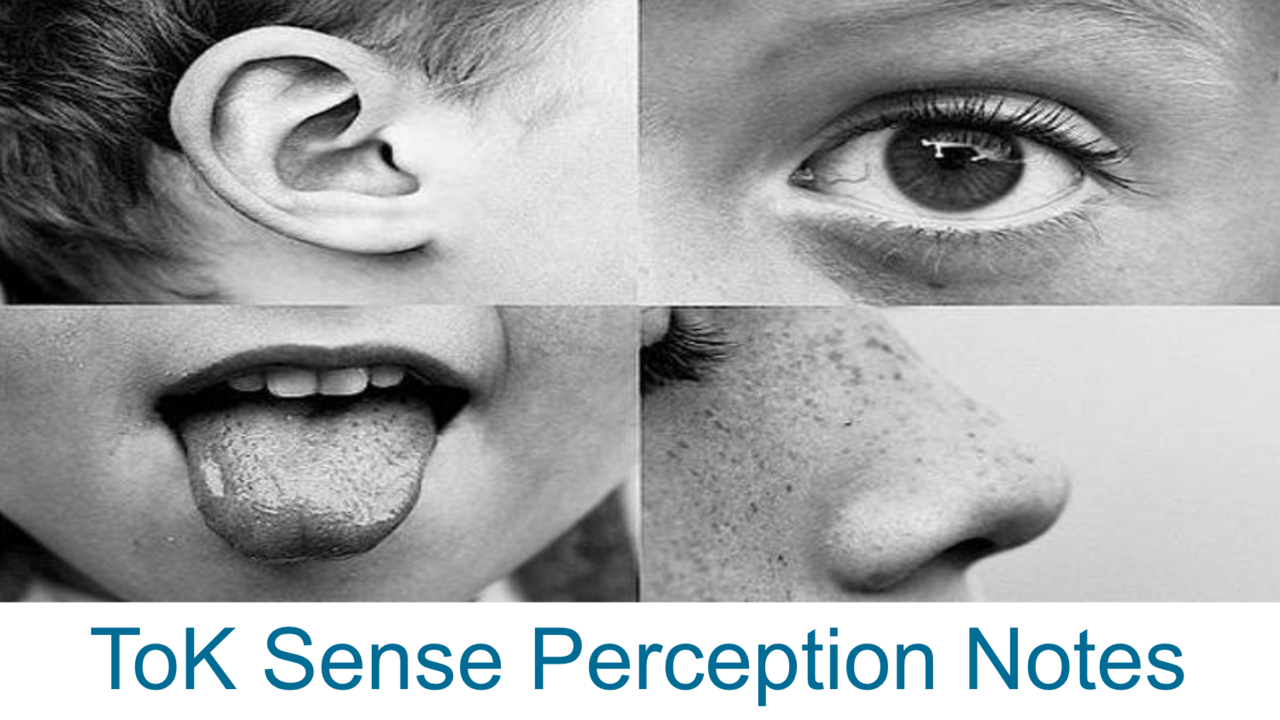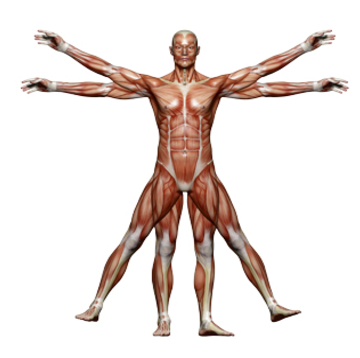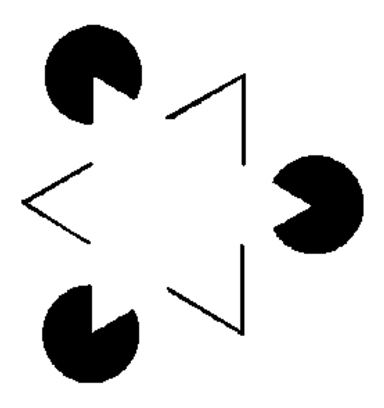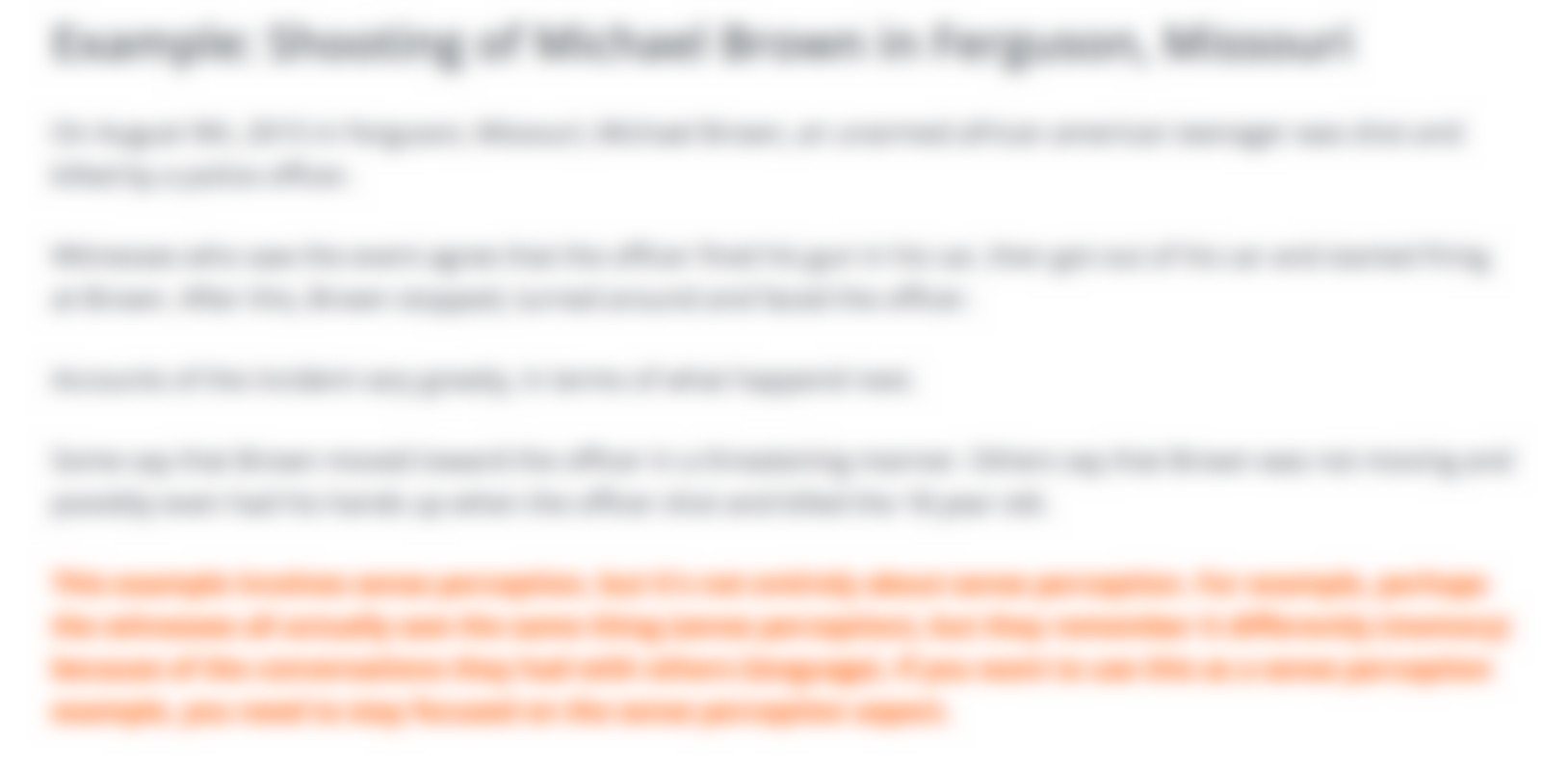Sense Perception Notes - Theory of Knowledge

Sense Perception Quotes
- "The eye sees only what the mind is prepared to comprehend" (Henri Bergson).
- "A fool sees not the same tree that the wise man sees. (William Blake).
- "You can't depend on your eyes when your imagination is out of focus" (Mark Twain).
- "Two thirds of what we see is behind our eyes" (Chinese proverb).
- Nothing revives the past so completely as a smell that was once associated with it" (Vladimir Nabokov).
Sense Perception Definitions
- "Perception by the senses rather than by the intellect." (Dictionary.com)
- "Perception by or based on stimulation of the senses." (Medical Dictionary)
Sense perception has three steps:
We perceive the world through our five senses. (Hearing, Sight, Smell, Touch, Taste)
- Our sense receptors are stimulated by sensory information.

- The brain translates the sensory information into sensations such as sound, taste, temperature, etc.
- Higher centres in the brain either ignore or recognize the sensations and their meanings, based on neuronal networks of past association and expectation. (Some of this stage 3 work actually involves reasoning).
Click the video to see a coffee-taste expert discuss the intricacies of how different coffees taste.
Sense perception is an important dimension of comprehending the world around us. It allows us to gather information from the outside world, so we can then go on to hopefully make sense of it.
The Range of All Animal Senses
All animal senses (including humans) can be categorized into four different senses:

The Range of Human Senses
Every living organism on earth has a unique range of senses. For example: snakes are able to sense infrared radiation, therefore allowing them to hunt at night. Bees and other insects are able to sense ultraviolet radiation, which attracts them to flowers. Bats and dolphins use sonar for navigation.
Sockeye salmon have deposits of magnetite in their bodies that enable them to detect Earth’s magnetic field.
 Every organism has a different range of senses. Humans are limited to five senses. The fact that different organisms sense the world around them in a different ways than we do is evidence that we perceive the world not as it is, but only by the ways that humans can. So when we sense the world around us, we can never fully understand our surroundings, we can only comprehend our environment through the limited range of human senses.
Every organism has a different range of senses. Humans are limited to five senses. The fact that different organisms sense the world around them in a different ways than we do is evidence that we perceive the world not as it is, but only by the ways that humans can. So when we sense the world around us, we can never fully understand our surroundings, we can only comprehend our environment through the limited range of human senses.
Advances in modern science we know that stimuli such as infared radiation, radio waves, sounds at low and high frequency, and many more are constantly in our environment. We cannot detect any of these, and therefore perceive 100% our surroundings. It is in this way that we are limited by our range of human senses.
Sensory information and interpretation
According to the Gestalt theory of psychology, we tend to perceive objects visually as meaningful patterns or groups, rather than collections of separate parts.
Stimuli are involuntarily being compared and contrasted with previous experiences. For example, when you see when you see stop light change from red to green, your mind perceives this change in colour, not so much as a change in colour, but more as a signal to move forward.
Things that affect sense perception
What we perceive depends on what is important and interest in at the time for each person (Cultural Influences on Perception). Our perceptions and conceptions are affected by things such as
- biases,
- motivations
- emotions
- cultural perspectives
- interests,
- expectations and
- background experiences (existing knowledge)
Optical Illusions
Optical illusions are very popular with students just starting out in ToK. They are clear evidence that we have weaknesses in terms of how our mind interprets stimuli. Often things are not as they appear. Our previous experiences with similar stimulai impairs our perception.
 In the two images to the right and left, you see a triangle and a square. But after
In the two images to the right and left, you see a triangle and a square. But after  looking at the images closely, it can be clearly seen that there are no squares or triangles. Our mind is simplifying visual images, grouping it into patterns that are easier to process.
looking at the images closely, it can be clearly seen that there are no squares or triangles. Our mind is simplifying visual images, grouping it into patterns that are easier to process.
This involves, what we call heuristics --basically mental short-cuts we use to process data quickly.





Woods, Tim. “Sense Perception Notes - Theory of Knowledge ” IBMastery 2 April 2021. Web. <https://www.ibmastery.com/blog/sense-perception-notes-theory-of-knowledge>






